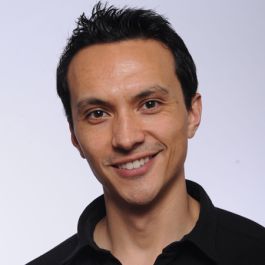In June, Jaclyn Rose celebrated what she called “the biggest product launch” she’s worked on since joining the product marketing team at HealthJoy: a partnership with Teladoc Health, a major player in the virtual care space, to integrate five of its care programs into HealthJoy’s healthcare navigation platform.
The move catapulted the Chicago-based healthtech company further toward its goal of putting together a comprehensive, one-stop resource for individuals seeking to get their heads around — and make the best use of — the benefits extended to them through employers.
“Partnering with Teladoc Health aligns with our goal of trying to break down that fragmentation and provide more care programs and care opportunities,” Rose said. “Their philosophy around providing continuity of care and whole-person care aligns with our vision.”
According to Strategic Account Executive Kayla Chirico, the partnership keeps pace with the current consumer landscape while simultaneously embodying HealthJoy’s goal of bringing about what Chirico described as a “fully integrated ecosystem of virtual healthcare vendors.”
“The Covid-19 pandemic was really a springboard for virtual care. People are way more apt to tap into a virtual provider now more than ever, not only for the convenience factor, but the cost factor and access to care,” Chirico said.
Integrating Teladoc Health into its platform will allow HealthJoy to enhance its network of virtual care providers and take the experience a step further, with broader virtual mental health, urgent care, primary care and chronic care capabilities.
“Imagine somebody who has no idea what’s going on and where to find care. There are 15 different phone numbers and 10 different apps. You don’t know how to get what you need or even maybe what you need. Our whole mission is to really simplify that experience and make it digestible for consumers while also bringing them into the health system in a way that maybe they didn’t realize they needed,” Chirico said.

Building that solution doesn’t mean just making a platform that’s easy to navigate, it means populating it with aligning elements. For HealthJoy, those elements include its Virtual Musculoskeletal (MSK) Care, through which users can connect with coaches to address issues like chronic pain via physical therapy, and the Employee Assistance Program (EAP) for mental health through its partnership with CuraLinc, touting counseling sessions and other supportive resources for individuals.
Team members described a throughline between these various offerings: Though different in focus, they serve complementary goals.
“Through HealthJoy, multiple healthcare disciplines are all talking to each other,” Rose said. “Someone working to address chronic pain in the MSK program can realize that they have a correlated mental health condition, and then our concierge staff can help them navigate through addressing their mental health needs. That’s where the healthcare navigation piece is so strong and draws the connection between these seemingly two different issues that are related.”
As the senior programming manager for MSK Care, Jeremy Baber is in charge of writing programming for the offering. For the seasoned physical therapy professional, being at HealthJoy is an opportunity to pour his background into a program that he hopes yields positive gains for its users.
“Learning how to scale a personal physical therapy experience and create it virtually has been an amazing experience,” Baber said, adding, “Everyone here is at the top of their game. You have to bring your A game every day.”
Fresh off the news of the Teladoc Health partnership, Rose, Baber and Chirico explained how three key offerings — Teladoc Health, EAP for mental health, and Virtual MSK Care — are powering HealthJoy to new heights.
What HealthJoy Does
HealthJoy recently announced its partnership with Teladoc Health. What gave rise to the partnership?
Head of Product Marketing Jaclyn Rose: First, there’s the issue of fragmentation in the market. As employers add more and more benefits, the likelihood that members are unable to use them becomes higher and higher, because there are so many barriers: What’s the vendor that does this program? Where do I find it? Fragmentation creates the opposite effect of what clients are trying to get out of the offering; members feel so overwhelmed that they don’t end up using these programs and employers waste money.
Then, there’s the trend of point solutions really exploding. Even before the Covid-19 pandemic, virtual care programs were increasing because health costs were rising so much. I think the pandemic expedited that.
Those two things in combination are why we are developing integrations with different care partners, including Teladoc Health. A member can access anything health-related and any one of their benefits or care programs directly through the HealthJoy app. We’re taking down all the barriers and teeing up virtual care directly within the app. Teladoc has several care programs, which allows us to expand the programs that we’re able to offer to our clients. A lot of times there are employee-size minimums that our clients don’t meet. We’re now able to unlock the ability for clients to even buy these programs in the first place.

HealthJoy introduced Virtual MSK Care in August 2021. Please tell us more about it. How does it build on HealthJoy’s mission?
Senior Programming Manager Jeremy Baber: A lot of times in physical therapy the focus is on your hardware — the muscle, the joint, the tendons. A lot of the exercises in the marketplace are geared towards that conditioning route. In our program, we spend about half the time on conditioning and the other half on neural “software.” That’s why we’re having more success with people who have chronic pain: Our program addresses that layer that is usually skipped over when you go to a typical outpatient orthopedic experience.
Also, with our program, we spend 30 to 40 minutes talking and getting to know somebody and building what’s called a therapeutic alliance. Therapeutic alliance means the patient believes that you care about their problem. Ultimately, the way the member thinks about their therapist drives outcomes. One of the key things with our program is we’re not just sending people out with an app and some sensors on their body; we’re building a therapeutic alliance each week of the program. That really helps drive our outcomes.
Tell us more about the EAP for mental health. What does it provide? How does it build on HealthJoy’s mission?
Strategic Account Executive Kayla Chirico: The EAP specifically is powered through our partner, CuraLinc. EAPs offer a kind of episodic, short-term solution to something that someone might be going through in their life. EAPs also offer a huge range of resources outside of just therapy, like webinars, tutorials and courses as well as financial, legal and eldercare support. It’s really a work-life resource for any given member on a team and extends out to the family members of eligible employees, as well.
I think the market is also looking for a longer-term solution. That’s why we developed the behavioral health program and we’re now offering a much larger breadth of support through Teladoc’s mental healthcare providers. If you talk to any large employer group today, the number one focus is mental health. We’re able to provide both short- and long-term care confidentially at a very, very low cost in comparison to going out of network or even going through the plan in-person.
Is there a success story pertaining to these offerings that really resonates with you?
Baber: There are some really cool things that we’re doing that are really cutting edge, but they’re not part of the norm in terms of physical therapy or virtual exercise therapy. I knew what I could do in person; I didn’t know what would happen virtually as well. In one case, we had an HR leader at a trucking and logistics company roll out Virtual MSK Care to his company, and he achieved pain relief that made him really confident in what we’re providing for his people. To see it be consistent — not just me, but all our coaches getting similar results — it’s been very gratifying.
Chirico: The conversations I’m having are with HR teams and how a program and a solution like ours has changed their day-to-day and saved them time. The administrative burden is released because we’re here to support their team. When HR does see that engagement, and they see how many members are participating in these types of resources, they’re like, “This is great.”
Rose: Whether it’s people who are just looking to handle preventive care or people who’ve been experiencing chronic pain and depression and we can get them enrolled in the programs that will help them, I think we’re able to address and provide support to such a wide range of folks. Everybody’s health needs are different. I think it’s cool that we can help both ends of the spectrum and everything in between.
Everybody’s health needs are different. I think it’s cool that we can help both ends of the spectrum and everything in between.”
Lastly, how do the teams work collaboratively to sell these offerings to customers?
Baber: I’ve been impressed with the incredible level of professionalism and how much people care about each other, but also how nimble the organization is. That’s a credit to our executive team and the employees.
Rose: We don’t do anything 50 percent here. We definitely go all in. I think that’s part of what makes this work. For our size, we’re surprisingly non-siloed. From my perspective, we’re almost to the point of oversharing and making sure that we’re covering all our bases and setting other teams up for success.
Chirico: I’m on the sales side but I work a lot with the customer success team. Those two departments can take feedback from a new client conversation around different initiatives, bring that to our product team and see what we’re able to accommodate or build or put on our roadmap. Teladoc Health is a perfect example of that as we’re hearing feedback around wanting integrated care.










